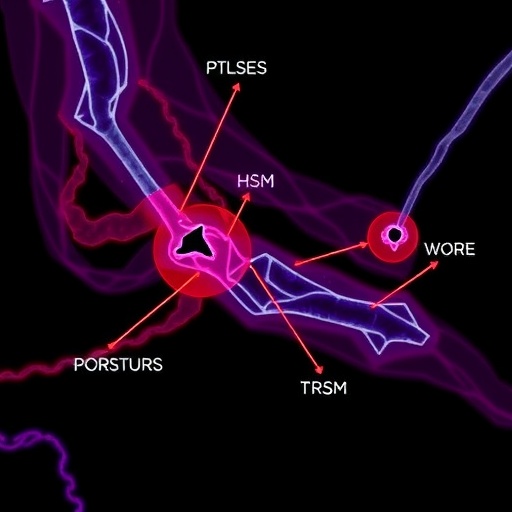In a groundbreaking advancement that promises new hope for patients suffering from one of the most painful and refractory skin conditions associated with chronic kidney disease (CKD), researchers from Boston University and Massachusetts General Hospital have uncovered a novel biological mechanism underlying calciphylaxis. This rare but devastating disease manifests predominantly in individuals with end-stage renal failure, causing severe, non-healing skin ulcers that lead to excruciating pain and high mortality rates. Until now, effective treatments have been elusive because the precise pathological drivers of these lesions were poorly understood. The new study, published in Science Translational Medicine, reveals a critical signaling axis involving the interleukin-6 (IL-6) pathway that fuels the progression of these ulcers, offering a targeted therapeutic approach that could revolutionize patient outcomes.
The researchers embarked on an in-depth analysis of skin and blood samples from patients diagnosed with calciphylaxis. Utilizing cutting-edge proteomic and genomic techniques, they systematically mapped disease-associated alterations in cellular signaling networks. Central to their discovery is a pathological feedback loop involving the interaction between subcutaneous adipose tissue, sweat glands, and microvasculature. The IL-6 signaling pathway was found to be hyperactivated within this triad, perpetuating inflammatory and pro-calcific signals that exacerbate tissue injury instead of resolution. This self-sustaining inflammatory loop provides a mechanistic explanation for the relentless progression of skin ulcers observed clinically.
Professor Vipul Chitalia, who led the investigation, emphasized the novelty and therapeutic promise of the discovery: “Our study reveals that a pathological interplay between fat, sweat glands, and blood vessels in the skin is driven by the IL-6 pathway, which acts as a continuous feed-forward loop causing ulcer formation. Breaking this cycle could be transformative for patients who currently have no effective options.” This insight reframes calciphylaxis not merely as a vascular calcification disorder but as a systemic inflammatory process susceptible to immunomodulation.
In addition to unveiling the IL-6 axis, the team highlighted the role of TYMP–IL-6–TF signaling in the skin microenvironment. Thymidine phosphorylase (TYMP) and tissue factor (TF) are molecules involved in angiogenesis and coagulation pathways, respectively. Their aberrant activation in concert with IL-6 creates a pro-thrombotic, pro-inflammatory niche that fosters microvascular occlusion and tissue ischemia. This synergistic signaling cascade further underscores the multilayered complexity of calciphylaxis and identifies multiple molecular targets for therapeutic intervention.
The implications of this research extend beyond calciphylaxis alone, touching on broader aspects of uremic vascular disease, a category that encompasses a spectrum of vascular pathologies specifically associated with chronic kidney failure. These conditions collectively contribute to the high cardiovascular morbidity and mortality seen in CKD patients. Thus, targeting the IL-6 mediated pathways might provide benefits in a wider clinical context by mitigating vascular inflammation and dysfunction.
Importantly, this work was made possible through the establishment and utilization of the Partners Calciphylaxis Biorepository and Patient Registry, which compiled comprehensive biological samples and clinical data from affected individuals. The collaborative nature of this initiative enabled rigorous experimental design and robust analysis, reinforcing the validity of the findings. The study also benefited from interdisciplinary expertise spanning nephrology, dermatology, vascular biology, and translational medicine.
The researchers caution that while their laboratory results are compelling, clinical trials are urgently needed to evaluate the safety and efficacy of IL-6 pathway inhibitors in calciphylaxis patients. Should these trials confirm their hypotheses, the landscape of treatment for this debilitating condition could be radically altered. Rapid translation from bench to bedside would be especially impactful given the current absence of specialized therapies, addressing an unmet medical need of global importance.
Looking to the future, the identification of this key signaling pathway may catalyze the development of additional targeted treatments, including combination therapies aimed at various nodes of the pathological network. Moreover, these insights can foster the creation of diagnostic biomarkers to identify at-risk patients early, allowing for proactive intervention prior to irreversible tissue damage.
Subject of Research: Cells
Article Title: Activation and targetability of TYMP–IL-6–TF signaling in the skin microenvironment in uremic calciphylaxis
News Publication Date: 23-Apr-2025
Web References: http://dx.doi.org/10.1126/scitranslmed.adn5772
Keywords: Translational medicine, chronic kidney disease, calciphylaxis, IL-6 pathway, vascular disease, skin ulcers, inflammatory signaling, TYMP, tissue factor, uremic vascular disease, pharmacological inhibition, repurposed drugs
Tags: advancements in nephrology researchBoston University medical researchcalciphylaxis treatment optionschronic kidney disease complicationschronic pain management in CKDinterleukin-6 signaling pathwayMassachusetts General Hospital discoveriesnovel therapeutic approaches for calciphylaxisrare skin diseases researchskin ulcers and kidney healthunderstanding calciphylaxis pathologyvascular disorders in kidney disease





